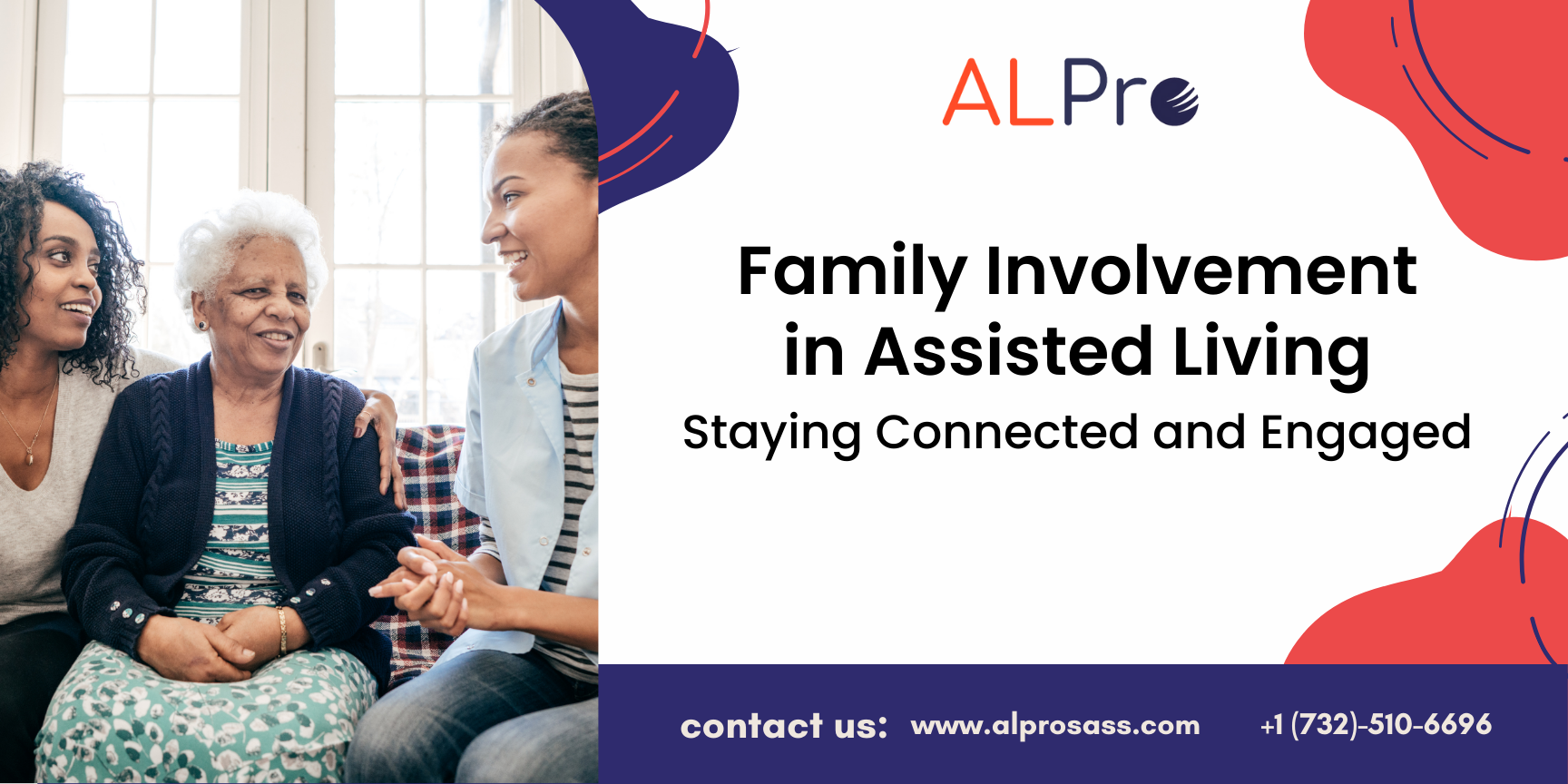Family Involvement in Assisted Living - Staying Connected and Engaged

Transitioning a loved one to an assisted living community is a significant step, often accompanied by a mix of emotions. While the community provides professional care and a supportive environment, family involvement remains essential to maintaining close bonds and enhancing the resident's quality of life.
Staying connected and engaged reassures your loved one and fosters their emotional and mental well-being. This blog explores the importance of family involvement in assisted living and offers practical tips on how families can remain active participants in their loved one's life.
Why Family Involvement Matters in Assisted LivingEmotional Support: Regular interactions with family members reduce loneliness and create a sense of belonging.
Encouragement and Advocacy: Families can advocate for their loved one's needs, ensuring they receive personalized care and support.
Stronger Relationships: Engagement reinforces familial bonds, helping residents feel cherished and valued.
Improved Communication: Active involvement provides insights into your loved one's daily life, health, and well-being, fostering trust and transparency.
When families remain connected, it benefits the resident and creates a collaborative environment with the staff, ensuring the best possible care.
Tips for Staying Connected and Engaged 1. Establish a Regular Visiting Schedule:Frequent visits show your loved one that they remain a priority in your life.
Why It Works: Consistency offers comfort and stability, giving them something to look forward to.
Tips:
Coordinate visits with other family members to spread them out.
Choose times when your loved one is most alert or engaged.
Many assisted living facilities host events, social gatherings, and activities that families are encouraged to join.
Benefits: Shared experiences strengthen bonds and provide insight into your loved one's new community.
Examples:
Attend holiday celebrations or themed parties.
Join family nights, open houses, or wellness workshops.
Stay informed about your loved one's well-being through regular conversations with them and the staff.
How to Stay Involved:
Schedule periodic check-ins with caregivers or nurses.
Encourage your loved one to share their feelings about their experiences in the facility.
For families who live far away, technology can bridge the gap.
Ideas:
Schedule video calls through platforms like Zoom or FaceTime.
Share family updates, photos, and videos through email or social media.
Set up a digital photo frame that updates automatically with new images from family members.
Be involved in care plan discussions to ensure your loved one's requirements and preferences are met.
What to Do:
Attend scheduled care conferences.
Ask questions about changes in care, health, or daily routines.
Advocate for adjustments if necessary to improve their comfort or happiness.
Make an effort to celebrate milestones and special occasions, no matter how small.
Ideas:
Organize small gatherings for birthdays, anniversaries, or holidays.
Bring a favorite meal, gift, or activity to share.
Acknowledge achievements or positive changes, such as joining a new activity.
Participating in meaningful activities together can create lasting memories.
Examples:
Take part in hobbies they love, such as crafting, gardening, or solving puzzles.
Go for walks around the community or nearby parks.
Read a book together or watch a favorite movie.
Help your loved one feel at home by personalizing their living space.
Ideas:
Decorate with family photos, cherished mementos, or favorite items from their previous home.
Add seasonal decorations or fresh flowers during visits.
Encourage grandchildren or younger relatives to stay connected through visits, calls, or letters.
Why It Helps: Intergenerational connections bring joy and energy to seniors while teaching younger generations empathy and respect.
10. Keep Communication Open Within the FamilyEnsure everyone in the family is informed and involved, even if they can't visit frequently.
How to Do It:
Create a group chat or an email thread for real time updates and planning.
Rotate visits among family members to balance responsibilities.
Distance: Use technology to stay in touch and plan periodic in-person visits.
Busy Schedules: Commit to short, frequent interactions, even a quick call or dropping off a care package.
Emotional Challenges: Seek support from family, friends, or support groups to navigate feelings of guilt, sadness, or anxiety.
Benefits for Families and ResidentsActive involvement creates a win-win situation for both residents and their families:
Residents feel loved, supported, and connected.
Families gain peace of mind knowing they're contributing to their loved one's happiness and care.
Assisted living staff benefit from collaborative relationships with families, enhancing care outcomes.
Family involvement in assisted living ensures that your loved one feels valued, supported, and connected. You can make a meaningful difference in their quality of life by staying engaged through regular visits, communication, and shared activities.
Whether you live nearby or far away, there are countless ways to maintain a close bond and actively participate in your loved one's journey. With effort, collaboration, and love, your family can create a fulfilling and enriching experience that feels like home.
